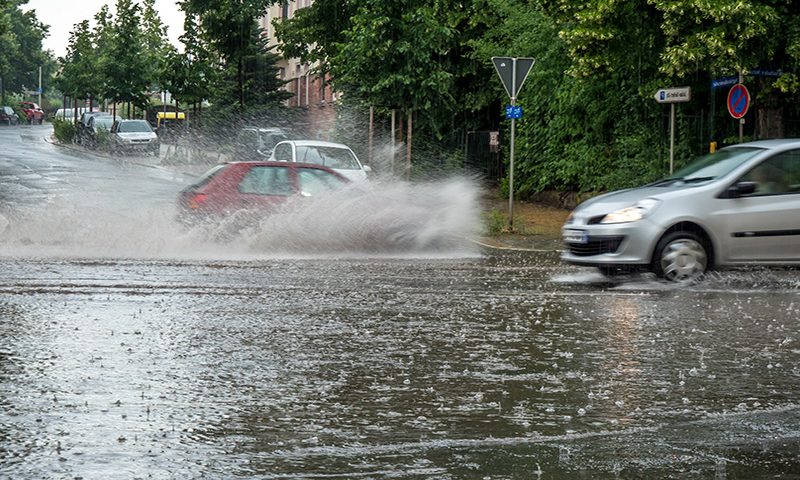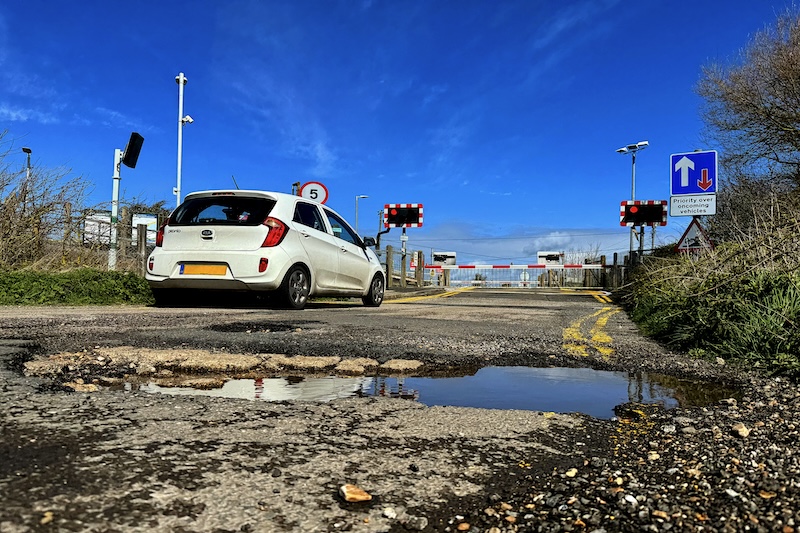Top tips for driving in wet weather

One of the biggest downsides of living in the UK has got to be the tumultuous weather; one day it can be blistering sunshine, the next we could see a mini typhoon wreaking havoc on the street.
It’s fair to say that we Brits have seen our fair share of wet weather, but do you know how to drive in it?
Whilst we might all feel like pros at navigating the roads in the rain, accident figures tell a different story, as rainy conditions are directly associated with higher accident rates.
To help you out, we’ve pulled together a little top tips guide to driving in wet weather – knowing how wet roads and reduced visibility affects the way your car handles will help you get to your destination safely in the rain.
Before setting off…
Is it important you go out?
It might sound silly, but if the weather is really bad, think about whether it’s really necessary for you to head out on the roads. And if it’s not, wait until the worst of it has passed.
Is your route prone to flooding?
If you need to head out when the weather is bad, think about your route. Is it prone to flooding? If the answer is yes, see if there’s an alternative route, and if there’s not, make sure you take the roads nice and easy and be prepared for delays to your journey.
Is your car fit for driving in wet weather?
With all the rain we Brits see each year, it’s important to make a few car checks regularly to ensure your car is equipped to take on the elements.
Windscreen wipers
It was recently revealed that if you have an issue with your wipers while driving in heavy rain, you could land a £100 fine. You can avoid this by checking regularly that they’re in good working order.
Windscreen
Your wipers aren’t the only thing on your windscreen that need to be in good condition for navigating the roads safely in the wet. It’s also important for you to make sure your windscreen washer fluid is topped up. Having a dirty or smudged windscreen when driving in the rain with limited visibility is a recipe for disaster.
Tyres
Tyres are one of the most important tools on your car to help you stay safe when driving in wet weather. Having tyres that don’t have an adequate level of tread could see your risk of aquaplaning ramp up. Make sure you check your tyres regularly to ensure the tread is above the legal minimum of 1.6mm.
On the roads…
Reduced visibility
It’s not surprising that with all that rain pounding on your windscreen and spray from other vehicles on the road, your visibility is reduced. You can help improve visibility by making sure your windscreen is clean and your wipers are working, but also by using the right lights.
Make sure you have your dipped headlights on. Not only will it make it easier for you to see, but it’ll also make it easier for other road users to see you too. Remember not to use your rear fog lights as these can mask your brake lights and dazzle the drivers behind you, which could result in you being rear-ended.
Increase stopping distances
Your tyres will have less grip on the road when it’s wet, which is why you need to at least double your stopping distances. You should also allow extra space between you and the vehicle in front by driving slower and braking earlier than usual.
Avoid using cruise control
While cruise control is a great feature, especially on long trips, as soon as the weather takes a turn for the worse, you should switch off your cruise control. This is because your chances of aquaplaning increase due to the wet roads becoming slippery.
Cruise control makes aquaplaning worse as it tries to keep your vehicle at a constant speed. Typically, you would disable cruise control by tapping the brakes, but if you don’t have anti-lock brakes, hitting your brakes while aquaplaning will only make the skidding worse.
Driving through surface water
We’d always recommend avoiding driving through surface water, but sometimes it’s unavoidable. If you have to drive, make sure you go slowly and steadily so you don’t make a bow wave and don’t forget to test your brakes as soon as you’re out of the water.
Never drive through surface water that’s moving or more than 10cm deep, and always let approaching cars pass first. Just six inches of water will reach the bottom of most cars, and at this depth, it can cause a whole host of problems, including loss of control or stalling as the water is sucked into the exhaust.
Add section about it being illegal to splash pedestrians?
How to handle aquaplaning
Most drivers will experience aquaplaning at least once in their life, so it’s important to know what to do if you find yourself in this rather frightening situation.
Aquaplaning is what happens when your car’s tyres encounter lots of water that’s standing on the road – more than they can clear. This results in the build-up of water under the tyre, lifting it away from the surface, leaving you with little or no grip on the road.
You can usually tell if you’re aquaplaning because your steering will feel light and unresponsive, and you’ll hear the displaced water roaring against the inside of your car’s wheel arches.
If you end up aquaplaning, you need to resist the temptation to brake as this will cause you to skid, which could have disastrous consequences. Instead, you should stay calm, take your foot off the accelerator and allow the car to slow down by itself while keeping the steering pointing in the direction of travel.
Eventually, your tyres will bite down through the water and come back into contact with the road, which should allow you to regain control.
So, there you have it – our guide to driving in wet weather. Fingers crossed after reading all this handy information you’ll be in the know and will feel more confident about what to do if you find yourself in challenging driving conditions due to wet weather.


